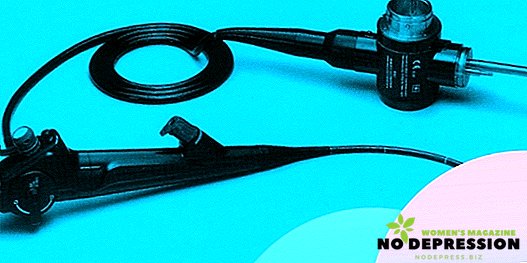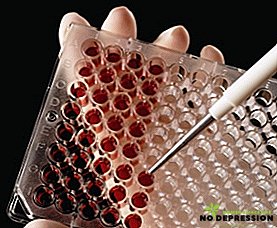Diseases in the female genital area may require surgery. One of the minimally invasive procedures used by gynecologists is hysteroscopy of the uterus. This is a mini-operation that allows an accurate diagnosis of many pathological conditions of the cervix and cavity of the reproductive organ.

If necessary, the diagnostic procedure immediately transferred to the treatment: the patient removes small tumors. The material obtained during the operation, sent for histological examination to determine the nature of the identified pathological changes.
The cost of hysteroscopy in Moscow and other major cities
The cost of the procedure may be different. Pricing factors are:
- reputation of the clinic where the manipulation is performed;
- qualification of the operating gynecologist;
- the complexity of the procedure.
An important point: is the hysteroscopy operative or will it be diagnostic only? In the second case, the price is less.
Approximate price frames:
- Moscow - 20-25 thousand rubles;
- St. Petersburg - from 20 thousand rubles;
- Yaroslavl - from 15 thousand rubles.
This amount includes:
- operative intervention;
- anesthesia;
- analysis of the results and the appointment of postoperative treatment.

But it should be noted that a number of tests must first be taken to determine the presence or absence of contraindications to the procedure. They are usually put on a separate list. The cost of tests can be up to one third of the price of the hysteroscopy itself.
However, often private clinics hold campaigns during which the patient gets an opportunity to undergo tests for free if he agrees to hysteroscopy in this medical institution.
Indications for hysteroscopy
This method of instrumental research is relatively new. But doctors are willing to use it, because it allows you to quickly, literally within a few minutes, solve many problems.
At the same time, intervention in the functioning of the organs of the reproductive system of the patient is minimal:
- no cuts and seams;
- the uterus remains intact;
- short rehabilitation period.
The procedure is prescribed if:
- an ultrasound revealed tumors that the doctor classifies as polyps, but he needs clarification of the picture;
- polyps were found in the neck of a woman during a gynecological examination;
- the patient is worried about bleeding of unknown etiology (but at the time of the study the bleeding was stopped);
- a woman notices any discharge from the genital tract during menopause;
- the gynecologist has a suspicion of chronic endometritis (inflammation of the uterus);
- ultrasound showed signs of hyperplasia (excessive growth) of the endometrium - the functional layer lining the cavity of the genital organ;
- preparations are underway for IVF (in vitro fertilization).
The accuracy of the research method is high. It allows you to make a diagnosis in cases where the doctor has doubts, not giving a conclusion about the nature of the disease and prescribe adequate treatment.
Gynecologists also prescribe hysteroscopy after an abortion, spontaneous abortion, or childbirth to determine if there are any pieces of the ovum or placenta left in the body of the uterus that can provoke acute inflammation. When found, they are immediately removed.
Features of surgery to remove a polyp in the uterus
Polyps in the body of the uterus or on its neck, in contrast to myoma nodes, are always subject to removal. Reason: there is a possibility of their transformation into a cancer.
This cannot happen with myoma, so doctors often leave the nodes under observation or conduct conservative treatment aimed at stopping their growth. After menopause, myomas often disappear on their own.

Polyps themselves do not pass. These hormone-dependent benign tumors grow rapidly and bother the patient, causing:
- painful sensations;
- bleeding or "smear" outside the menstruation period;
- infertility.
If benign tumors are relatively small in size, they are resected by hysteroscopy. The operation can last a little longer than the diagnostic procedure, and takes about 25-30 minutes with the preparatory stage. Compared with other methods, hysteroscopy allows you to achieve better results:
- leg polyp scrolls, the trauma at the place of separation is minimal;
- the area of the endometrial layer under the neoplasm is extracted entirely, thus avoiding a relapse;
- a thorough examination of the uterus is carried out on the screen with a multiple increase, which makes it possible to see all the polyps, including those that cannot be examined on ultrasound due to their small size, and immediately eliminate it.

If, after removing the growths by ordinary curettage, the woman is tormented for a long time by bleeding, then the hysteroscopy method guarantees discharge from the hospital for 2-3 days after surgery. The patient's condition is normal, hemostatic agents are not required.
Often for 3-4 days, if the polyps were small, the woman is already going to work and waiting for the results of the operation, without being distracted from the labor process.
Hysteroscopy technique
The operation begins with a diagnostic examination. Before the intervention, the anesthesiologist talks with the woman to find out if she has an allergic reaction to the medication and how she suffers anesthesia. The doctor selects the method of anesthesia. Most often it is intravenous anesthesia, the duration of which is 20-30 minutes. It causes a fast medication sleep.
Then the patient is located on the couch, partly reminiscent of a gynecological chair. Sometimes the procedure is carried out in the chair. The external genitals are treated with antiseptic preparations, anesthesia is done.

After the woman falls asleep, the procedure begins.
- The cervix is fixed and slightly expanded so that the flexible tube of the device can easily penetrate to the test organ. The end of this thin tube is equipped with a mini-camera, and the image is displayed on the monitor.
- The uterus is filled with liquid or gas - this is necessary so that the folds are smoothed and the cavity is clearly visible.
- The doctor conducts an examination, notes the location of the polyps. Then, with special tweezers attached to the end of the device, the tumor is removed. For large and dense fibrous tumor growths, a surgical loop is used. The wound is being processed.
- The hysteroscope is removed, the patient is placed on a gurney and taken to the ward.
Then an anesthesiologist observes her, controlling the awakening. After the end of the anesthesia is allowed to stand up, drink, eat.

Preparation for hysteroscopy
Before you assign the date of surgery, the doctor gives the patient a referral for tests. They are necessary, as contraindications to the procedure can be found. Then you have to choose another method.
The list of analyzes is approximately as follows:
- a smear on the purity of the vagina;
- blood antibody markers for hepatitis;

- determination of the Rh factor;
- blood grouping;
- blood tests for AIDS, syphilis;
- complete blood and urine test - to exclude an acute inflammatory process;
- ECG;
- fluorography;
- Ultrasound of the pelvic organs.
The degree of purity of the vagina must be I or II. In other cases, the operation is not carried out until the complete elimination of inflammation of the external genital organs, in order to exclude the penetration of the infection in an ascending way.
Before the operation, special preparation is not needed. It is only necessary to eat a light dinner the day before, and in the morning on the day of the procedure exclude food and fluid intake so that there are no complications after the introduction of anesthesia.
Contraindications
Contraindications are:
- pregnancy or suspicion of it;
- any acute inflammatory process;
- not stopped bleeding;
- stenosis (narrowing) of the cervix;
- decompensated diabetes.
Most of the contraindications are relative, after their elimination the operation can be done.

results
The doctor will report the first results to the woman immediately after she wakes up in the ward. He will describe what he has seen, will tell about the sizes and features of the removed tumors, will give recommendations on how to behave further.
Then within 7-10 days it is necessary to wait for the results of the study material. After receiving them, the gynecologist:
- provide information on which polyps were present (adenomatous, fibrous, glandular, etc.);
- will give a prognosis of the disease;
- prescribe medications.
In addition, he will give permission to try to get pregnant (or recommend to wait a certain period).
Postoperative period
The first day or two after hysteroscopy can be observed:
- lower abdominal pain;
- temperature rise up to 370WITH;
- bloody issues.
If you have pain, you can drink antispasmodics. It is not necessary to lower the low temperature, but if it rises, an ambulance should be called: perhaps the process of inflammation of the uterus has begun - a rare but still occurring complication.

To prevent such a development of events, doctors usually prescribe broad-spectrum antibiotics with a short course - for 5 days.
Spotting will be abundant at first, but by 2-3 days their intensity will decrease, they will resemble the last days of menstruation. 10-12 days, you must use the pad, first normal, then thin daily, because the discharge may slightly increase or weaken on different days.
Until the end of the following months are prohibited:
- fitness;
- sudden movements, weight lifting;
- sex life.
The wound surface on the uterus, although small, is there. It is easy to infect the infection, so the hygiene of the genital tract must be especially thorough. Bath can not be taken, but the daily shower is required.

Feedback on the operation
Usually, hysteroscopy does not leave unpleasant memories in patients.
I had an operation because of suspicion of a polyp that could not be seen on an ultrasound. He was found, removed. Recovered quickly, there was no relapse. Yes, then I saw Yarina to normalize the cycle.
Maria, 35, Moscow
The doctor explained that polyps often occur in women of my age due to hormonal dysfunctions. I was afraid of the operation very much! But everything went well: she fell asleep, woke up, and it turns out that everything is already behind! Then his stomach hurt, he drank no-shpu. A week later, I forgot about the operation. The tumor was removed, warned about the possibility of recurrence of hyperplasia. Now I’m drinking the KOKA course (“Regulon”) to normalize the hormonal levels, then I’ll put a spiral.
Natalia, 43 years old, Nizhny Novgorod
Hysteroscopy is a mini-operation that allows you to quickly and endlessly eliminate endometrial hyperplasia and its obvious manifestations - polyps. It is not necessary to be afraid of it: a qualified doctor will perform the operation without any negative consequences for the patient.
If the doctor sees the indications for this procedure, go through it: with its help, you can accurately diagnose many diseases of the uterus and take measures in time to get rid of them.
Additional information about hysteroscopy can be found in the following video.













